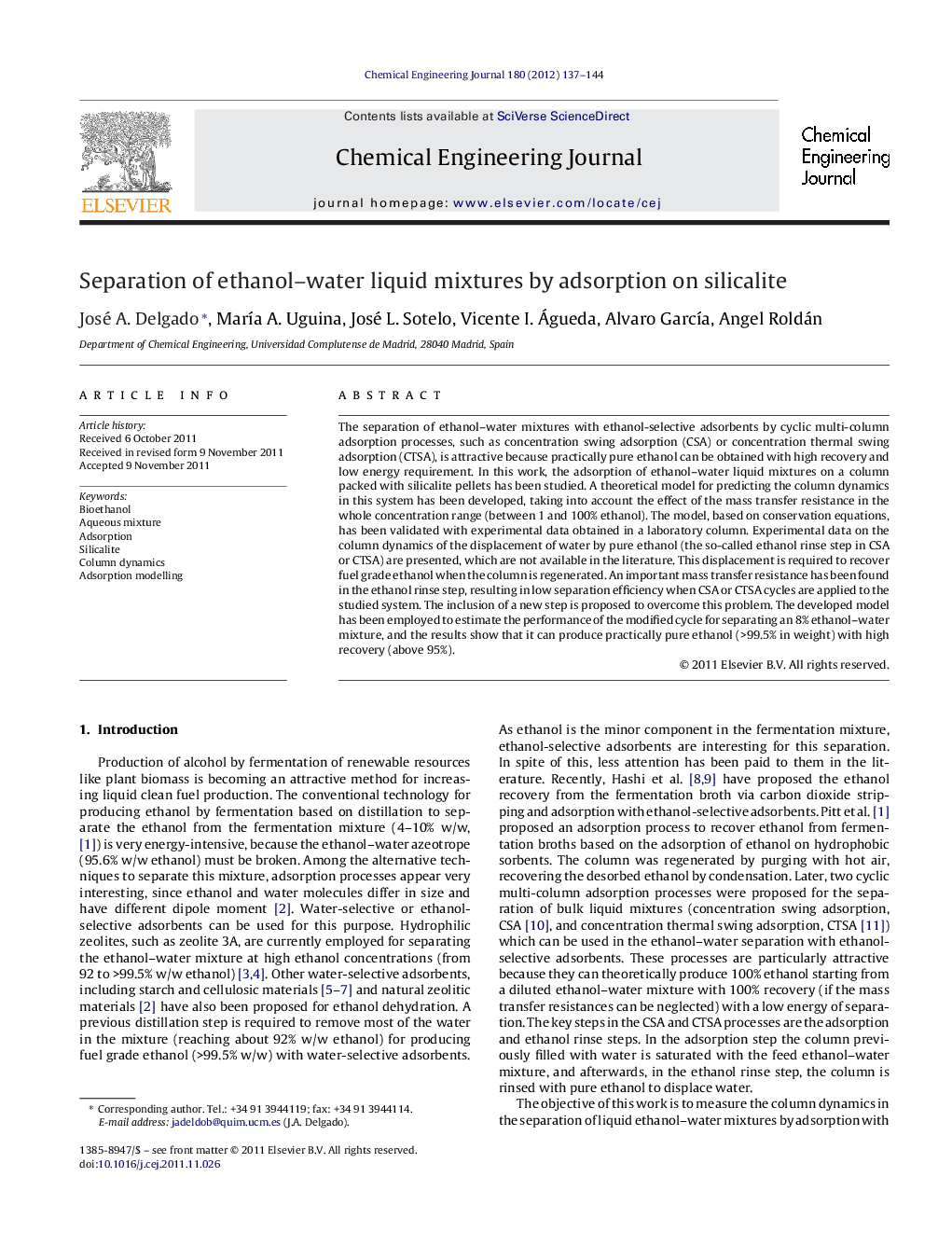| Article ID | Journal | Published Year | Pages | File Type |
|---|---|---|---|---|
| 150359 | Chemical Engineering Journal | 2012 | 8 Pages |
The separation of ethanol–water mixtures with ethanol-selective adsorbents by cyclic multi-column adsorption processes, such as concentration swing adsorption (CSA) or concentration thermal swing adsorption (CTSA), is attractive because practically pure ethanol can be obtained with high recovery and low energy requirement. In this work, the adsorption of ethanol–water liquid mixtures on a column packed with silicalite pellets has been studied. A theoretical model for predicting the column dynamics in this system has been developed, taking into account the effect of the mass transfer resistance in the whole concentration range (between 1 and 100% ethanol). The model, based on conservation equations, has been validated with experimental data obtained in a laboratory column. Experimental data on the column dynamics of the displacement of water by pure ethanol (the so-called ethanol rinse step in CSA or CTSA) are presented, which are not available in the literature. This displacement is required to recover fuel grade ethanol when the column is regenerated. An important mass transfer resistance has been found in the ethanol rinse step, resulting in low separation efficiency when CSA or CTSA cycles are applied to the studied system. The inclusion of a new step is proposed to overcome this problem. The developed model has been employed to estimate the performance of the modified cycle for separating an 8% ethanol–water mixture, and the results show that it can produce practically pure ethanol (>99.5% in weight) with high recovery (above 95%).
► The separation of bulk ethanol–water mixtures by adsorption can be energy-efficient. ► This separation is studied using a column with silicalite pellets. ► A model for predicting the column adsorption dynamics in this process is developed. ► A new step is proposed to avoid losing ethanol in the ethanol rinse step. ► This process can yield pure ethanol with high recovery.
